Kilmurry
Houses within 10km of this house
Displaying 30 houses.
Houses within 10km of Kilmurry
Displaying 30 houses.
| House name | Description | |
|---|---|---|
| Odell Ville | This house was occupied by John Odell in the early 1850s and held by him in fee. It was valued at almost £14. The house was the residence of William Odell in the 1870s. Home of the Morony and Lloyd families in the late 19th and 20th centuries. Occupied by Wilfrid H. Wilkinson in 1906. It was advertised for sale in February 2009. |

|
| Springmount | Richard S. Croker was the proprietor of this townland at the time of the first Ordnance Survey and Springmount was the residence of William Brown. By the time of Griffith's Valuation Gerard Barry held the house and 56 acres in fee. | |
| Springfield Castle | Originally a Fitzmaurice residence adjoining a tower-house of the Fitzgeralds, this house passed by a marriage in 1775 to the Deane family, Lords Muskerry. It became their main residence in the late 18th century and throughout the 19th century. In 1786 Wilson refers to it as " a very fine seat with extensive demesnes". At the time of Griffith's Valuation the Honourable Robert Fitzmaurice Deane was residing at Springfield which was valued at £45. The house was burnt in 1923 and a 19th Gothic wing was made into a new house, which may now be rented as self catering accommodation. |

|
| Feohanagh | There is no large house marked on the first Ordnance Survey map for this townland, however by the time of Griffith's Valuation in the early 1850s a house valued at £10+ was recorded in Feohanagh. It was occupied by James Wigmore and held from Viscount Lismore. [Grid reference is approximate] | |
| Ballynoe | An 18th century house built by the Cox family. This house valued at £39 was the home of William Cox in the 1850s and 1870s. At the time of Griffith's Valuation it was held from the Court of Chancery. Bence Jones records this house as now derelict. Described as the Irish Tourist Association surveyor in 1944 as a "grand" Georgian house but in a very bad state of repair. |

|
| Fort House | The residence of David Hartigan in the early 1850s, held from William and Charles Wyse (minors) and valued at £13. | |
| Drewscourt | Home of the Drew family in the 18th and early 19th century. Drew's Lodge, Charleville, is listed as the residence of F. Drew in 1814 and Lewis refers to Drew's Court as the residence of the Drew family. The house appears to be vacant at the time of Griffith's Valuation and was in the possession of Henry Thomas Allen who held land from Francis Drew. Clennel Frank Massy Drew occupied this house in 1906, valued at £18. Drewscourt was burnt down in the 1920s but the farmyard complex remains. |
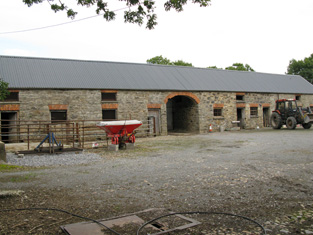
|
| Rossmore | Rossmore was the home of the Shelton family in the 18th and 19th centuries, occupied by J. Shelton in 1814 and 1837. The Reverend Grantley Shelton was resident in the early 1850s. The house was held from the Conyers family and was valued at £25. In 1894 Slater refers to it as the residence of Deane Shelton. | |
| Heathfield House | Located on the Warren estate this house was occupied by Edward Lloyd circa 1840 and in the early 1850s who held it along with 609 acres. Still in Lloyd occupation in the 1970s. This house was offered for sale in 2010. | |
| Frankfort | Samuel Adams was living at Frankford, Newcastle, in 1814. The residence of Richard Standish circa 1840 and of John White who held it in fee in the early 1850s. The buildings were valued at £9. This house is still well maintained and occupied. | |
| Ballyneale | Bence Jones writes of this house having an early 19th century appearance. Occupied by John Cox and held from the Honourable John Massy in the early 1850s. The buildings were valued at £13+. At the end of the 20th century this house was the home of Lewis Glucksman. Sold by the Glucksmans in 1998. In 2008 it was placed on the market again by its current owner David Pearl for 10,000,000 euro. see http://www.michaelhdaniels.com/index.cfm?fuseaction=propdetails&Prop_RefId=39 |

|
| Glenwilliam | A house built in 1797 by the Reverend William Massy, second son of the Reverend Godfrey Massy. Occupied by George Massy in 1814. The residence of Mary Anne Massy at the time of Griffith's Valuation, held from the Court of Chancery and valued at £38. In the later 19th century it was the home of the Atkinson family. Slater noted it as the seat of Thomas D. Atkinson in 1894. This house is still extant and occupied. |

|
| Lisduane | The seat of Walter Mason, situated on the estate of General Dixon [Dickson], circa 1840. Occupied by John [Leland] Mason at the time of Griffith's Valuation and held by him from the Court of Chancery. The buildings were valued at £12. William Harte Mason of Cooleen, Bruree owned 190 acres in the 1870s. A house and farm are still extant at the site. | |
| Coolrus House | The residence of Richard Harte circa 1840 and of James Lynch in the early 1850s who held the property and 186 acres from the Court of Chancery. The house has diminished in size by the publication of the 25-inch edition Ordnance Survey map in the 1890s and it is no longer extant. | |
| Castletown Conyers | The seat of the Conyers family, occupied by C. Conyers in the early 19th century. By the time of Griffith's Valuation the house appears to be in use as an auxiliary workhouse, held by the Croom Guardians from William Bailey, medical doctor, and valued at £25. In 1894 it was the residence of Charles Conyers. |

|
| The Turret | Lewis writes that the Turret was erected by a branch of the De Lacy family and repaired by Colonel O’Dell in 1683 and was "lately the residence of Major O’Dell". The Ordnance Survey Name Books refer to an inscription on the wall of the building which recorded the O'Dell family inhabiting the building in 1683. It was reputed to incorporate a turret from an old house of the Knights Hospitallers. Thomas O'Dell was resident in 1814 and Mrs O'Dell of the Turret, Ballingarry, died in 1818 according to the church records of that parish. Fitzgerald in 1826 refers to Jackson's Turret, built on a hill and "now nearly in ruins". Bence Jones writes that a porch and wing were added to the building in the late 19th century and that it became a presbytery. Grid reference is approximate. | |
| Cappanihane | This house was occupied by John Mason in 1814, by R. Mason in 1837 and in use as an auxiliary workhouse at the time of Griffith's Valuation, when the buildings were valued at £15. This house was the home of John Parker Graham in the 1860s and 1870s. Another house in this townland, Glenbrook Lodge, was occupied in the early 1850s by Myles Mason and valued at £9+, grid reference R492 318. Mary Hamilton held a mansion house valued at £20 and 41 acres of untenanted land at Cappanihane in 1906. | |
| Ashborough | Lewis records Daniel D. Power as resident at Ash Grove in the parish of Ballingarry in 1837. Held Daniel D. Power at the time of Griffith's Valuation and valued at £16 and in his occupation at the time of the 1854 sale. An old outbuilding remains at the location of this house. |
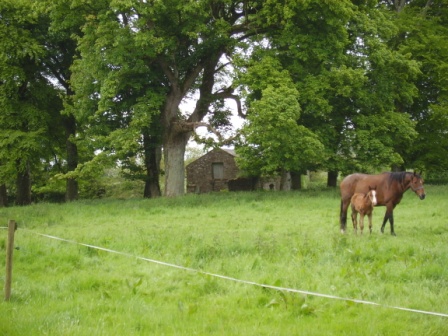
|
| Tullylease | Hajba writes that the Morgans [Morgells] had an interest in this house through marriage with the Sullivans. Occupied by John Sullivan in 1814 and partly rebuilt by William Sullivan in the 1830s. Occupied by William Sullivan in the early 1850s and held from the representatives of Crosbie Morgel, when it was valued at £15.15 shillings. Acquired by James Lynch at the end of the 19th century and restored by the present owners. |
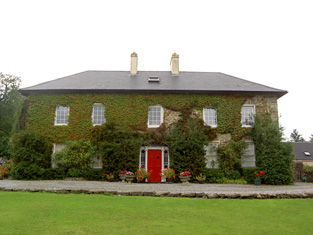
|
| Fortwilliam | A house on the Evans estate occupied by William Barry at the time of Griffith's Valuation when it was valued at £23, later a Sheehy residence. The Sheehy sale rental of 1875 records the house containing 3 reception rooms and 5 bedrooms. It was conveyed to Robert K. Sheehy by Edward R. C. Barry on 7 January 1874 and advertised for sale in June 1875. The National Inventory of Architectural Heritage dates this Tudor Revival house from circa 1880 to the design of Sir John Jackson (1851-1919), so the present house may incorporate the earlier one which is marked on the first Ordnance Survey map. In 2006 this house was no longer occupied. |
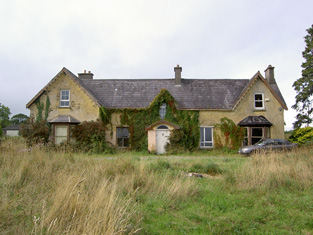
|
| Kilbolane | Home of the Barry family in the late 18th and 19th centuries located on the Evans estate. Occupied by Edward Robert Caulfield Barry in the early 1850s when the house was valued at £39. There was also a flour mill closeby. Sold by the Barrys at the end of the 19th century to David O'Leary Hannigan and later purchased by Milford Creamery who demolished the house in the mid 20th century. |
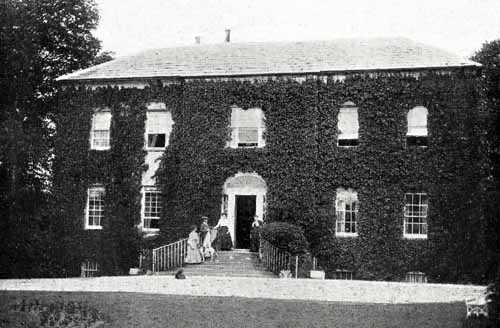
|
| Prohust | Prohust/Prohurst/Proughis was built by Jonathon Bruce, third son of the Reverend Jonathon Bruce of Milltown Castle, and occupied by him in 1837. By the time of Griffith's Valuation the property was held by George and John Evans in fee, the buildings were valued at £37. Hajba writes that the house was occupied by members of the Turner and Rice families in the latter half of the 19th century. This house is still occupied. |
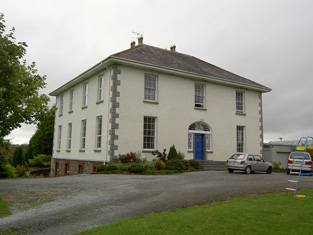
|
| Gibbings Grove | This house was the seat of the Gibbings family in the 18th and early 19th centuries. The family was still resident in 1837 but by the early 1850s the house was occupied by Edmond Irwin who held it form Richard Gibbons. It was valued at £14. Later occupants were local priests and it was eventually sold by the Gibbings in the late 19th century. In 1944 the Irish Tourist Association Survey referred to it as the home of the Cagney family who had purchased the property c.1912 and also that it was famous for growing the Toormore apple, used in making cider. The house is still occupied. |

|
| Castle Ishen | Castle Ishen was the seat of the Fitzgerald family from the mid 17th century until the late 19th century. In the late 18th century the castle was replaced by the house which stands today. In the 19th century the house was occupied by the estate agents, members of the Hannigan and O'Leary families although Lady Fitzgerald, widow of the 8th Baronet, is recorded as the occupier at the time of Griffith's Valuation. She held the house valued at £10+ in fee. Her sons were both minors at the time. Hajba writes that the O'Learys purchased the house in the early 20th century. In 1944 the Irish Tourist Association Survey noted that they had first come there in the 1790s. Castle Ishen is still extant. | |
| Hardingville House | Home of the Harding family in the 19th century, occupied by C. Harding in 1837 and by William Harding in the early 1850s. The Hardings held the property from James D'Arcy Evans and the buildings were valued at £11.15 shillings. The Hardings also occupied Hardingville Cottage another residence in the same townland, Grid Reference R403 217. In the 1870s William Harding of Coolnagour owned 229 acres in county Cork. The house is no longer occupied. |
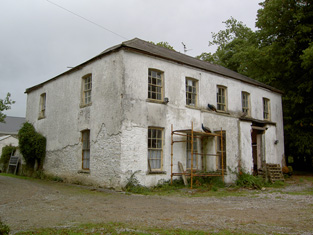
|
| Mayne House | In 1837 Brian Sheehy was resident at Mayne and in the early 1850s Bernard Sheehy held the house valued at £21+ from John Duggan and all the townland of 107 acres. It is no longer extant. | |
| Ballyteige | Originally the home of a branch of the Tuthill family, no large house is marked on the first Ordnance Survey map in this townland. The house was leased to David Conyers of Castletown Conyers in 1885 and to Thomas W. Westropp Bennett in the 1890s. It is now available for hire, see http://www.ballyteigue.com/ |
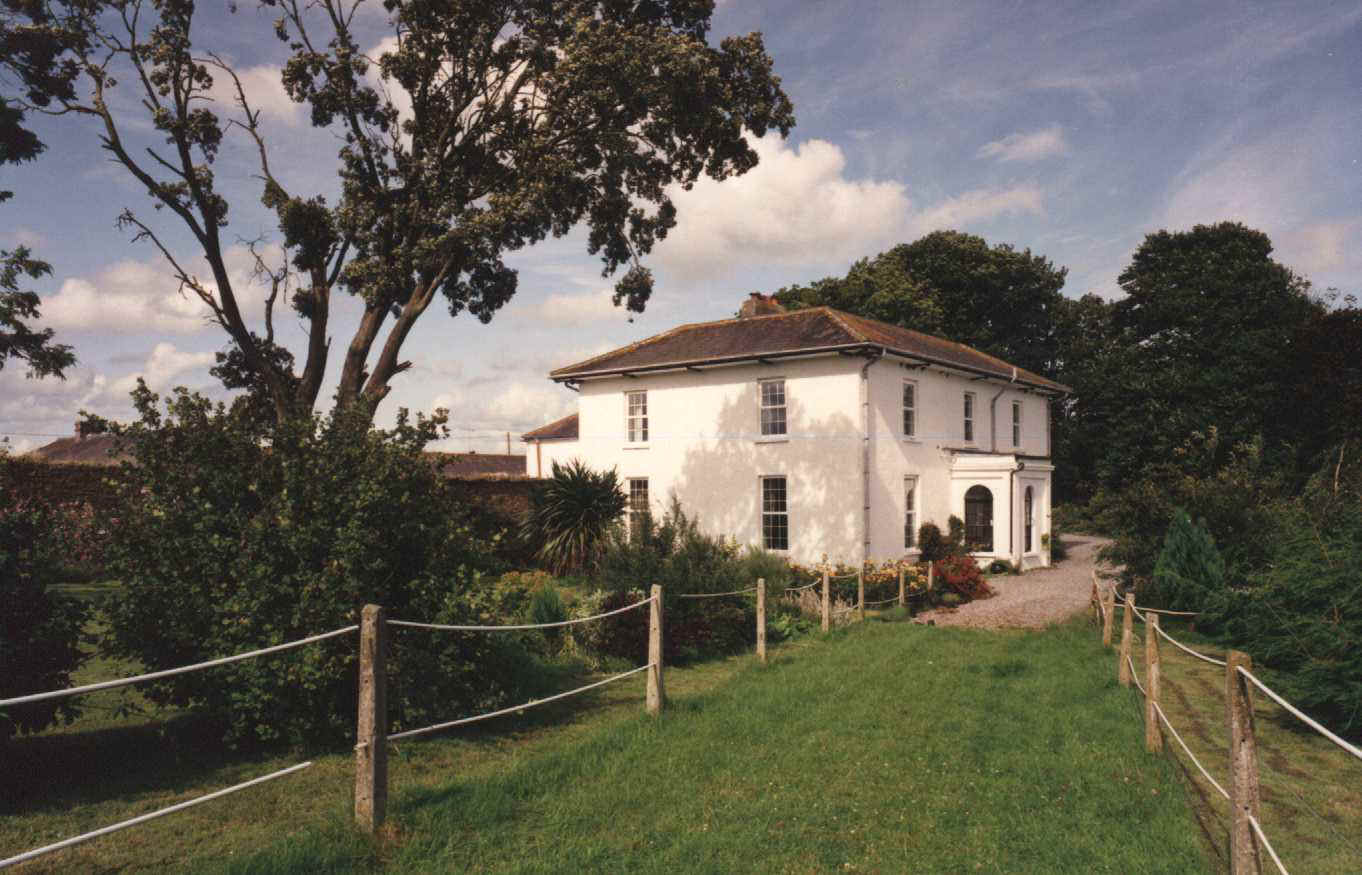
|
| Newtown | Hajba dates this house from 1749 when it was built as a hunting lodge for the Courtenays. Described by Lewis in 1837 as the seat of Robert Courtney, John Culhane was resident by the time of Griffith's Valuation, holding the property from John Courtnay. The buildings were valued at £13. In 1943 the Irish Tourist Association Survey noted that it was then the home of the Culhane family. The house was demolished in the 1960s. | |
| Curryglass | Originally a Goold home, occupied by B. Plummer in 1814 and Pierce Purcell Goold in 1837. His representatives held the property in fee at the time of Griffith's Valuation and the house was valued at £18. It was advertised for sale in May 1852. Home of Robert Edward Gibbings for sometime in the mid 19th century. An O'Callaghan home in the 20th century. Also known as Curraghglass or Curraglass House. In 1943 the Irish Tourist Association Survey noted its association with all of these families as well as, in the eighteenth century, the Lysaght family. It is still extant and occupied. |
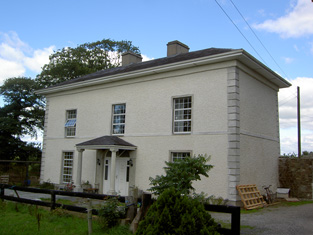
|
| Gortskagh | No house of more than £5 valuation is recorded in Griffith's Valuation in Gortskagh except the glebe house at £26. This house was occupied by Reverend William Bunbury who held the property from John Courtenay. The Deane connection with Gortskagh commenced with the marriage in 1871 of Honourable Matthew J.H.F. Deane, uncle of the 4th Baron Muskerry, with Maria, daughter of Reverend William Bunbury. The Deanes sold the house to the Binchy family in the 1890s. Home of the Foley family in the early 21st century. |
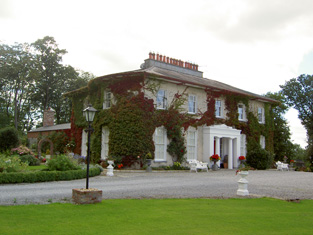
|

